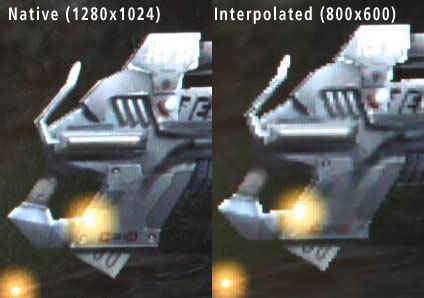Nvidia GeForce 6200 TurboCache: Fast Name, Slower Speed
Benchmarks And Settings
The low 3D performance of entry-level graphics cards makes performance tests and comparisons against faster cards difficult. While performance-oriented cards are generally judged by their performance in very high resolutions with quality enhancing features such as anisotropic filtering (AF) and full-scene anti aliasing (FSAA) enabled, the cards under discussion here would be way out of their league in any such test. Their 3D performance is simply far too low. At very low resolutions, high-end cards become so fast that they are held back by the CPU, thus again making comparisons difficult.
When a gamer is faced with a graphics card that doesn't offer enough 3D performance, there are two choices: Either, you can reduce the display resolution or you can turn down the quality settings of the game. To achieve the latter, modern games offer various pre-defined settings. However, with TFT displays becoming more and more common, reducing the display resolution may not be a wise choice.
TFT displays work best at their native resolution, which is determined by the number of pixels physically available in the panel of the display. The most common native resolutions are 1024x768 and 1280x1024, with larger displays obviously using even greater resolutions. The best image quality and crispness is achieved when the panel can operate at its native resolution. All other resolutions, both higher and lower, have to be interpolated, i.e. scaled up or down, so that they can fit the screen. The result is usually a blurry and washed-out image.
TFT displays possess a pre-defined (native) resolution. All other resolutions have to be interpolated, i.e. either scaled up or down to fit the screen. As a result, the image quality suffers greatly.
To fulfill the requirements set forth by a fixed screen resolution, we tested all entry-level cards in the two most common resolutions. For comparison with faster cards, we tested all candidates with the usual in-game quality settings, but without AF and FSAA. Depending on the game, we then also ran some more tests with one or two additional settings using reduced detail levels. Since the cardmakers advertise all cards as being DirectX 9 compatible, we decided to test them exclusively with games and benchmarks of the DirectX 9 class.
Get Tom's Hardware's best news and in-depth reviews, straight to your inbox.
